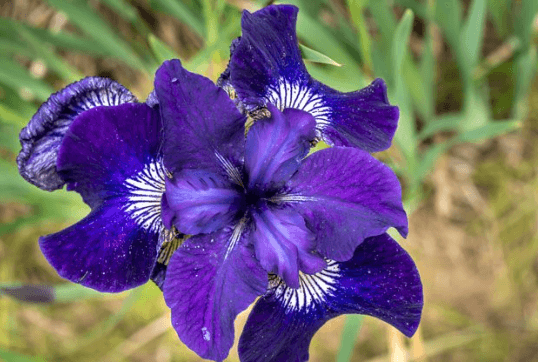
The iris, with its rich historical roots and diverse symbolism, offers a fascinating subject for exploration. Originating from ancient civilizations where it was revered for its beauty and meaning, this flower continues to hold significance across cultures today. Its varying colors not only enhance garden aesthetics but also convey profound messages of hope, wisdom, and purity. However, the cultivation of irises requires specific conditions and care that merit closer examination. What practices can ensure the successful growth of these vibrant blooms, and how do they influence contemporary horticultural trends?
History of the Iris
The history of the iris, a genus encompassing over 300 species, reveals a rich tapestry of cultural significance and botanical evolution that has shaped its cultivation and hybridization across various civilizations.
Ancient cultivation practices, particularly in regions like Egypt and Greece, led to famous varieties such as Iris germanica and Iris pallida, which exhibit unique chromatic and morphological traits, enhancing horticultural diversity.
See also: Female:2g2cjixl2ng= Actors
Symbolism and Meaning
Iris flowers embody a rich symbolism that varies across cultures, often representing faith, hope, wisdom, and valor, thereby establishing their significance in art, literature, and religious practices throughout history.
The color symbolism of irises further enhances their cultural significance, with blue symbolizing hope, purple denoting wisdom, and white representing purity.
These meanings resonate deeply, influencing human expression and spiritual beliefs across diverse societies.
Growing Irises in Your Garden
When selecting a site for planting irises, it is crucial to consider well-drained soil and full sun exposure, as these conditions significantly enhance their growth and flowering potential.
Employing effective planting techniques, such as spacing bulbs adequately, facilitates optimal airflow.
Furthermore, implementing integrated pest management strategies can mitigate common ailments, ensuring robust development and vibrant blooms, thereby maximizing the beauty of your iris garden.
Conclusion
The iris, with its rich historical roots and profound symbolism, continues to captivate enthusiasts and scholars alike.
Its cultivation demands specific conditions, including well-drained soil and ample sunlight, to flourish.
Yet, as these vibrant blooms emerge, a lingering question remains: what deeper significance do these flowers hold in the intricate tapestry of human culture?
In exploring the iris, one may uncover layers of meaning that transcend mere aesthetic appreciation, inviting reflection on the enduring connection between nature and humanity.




